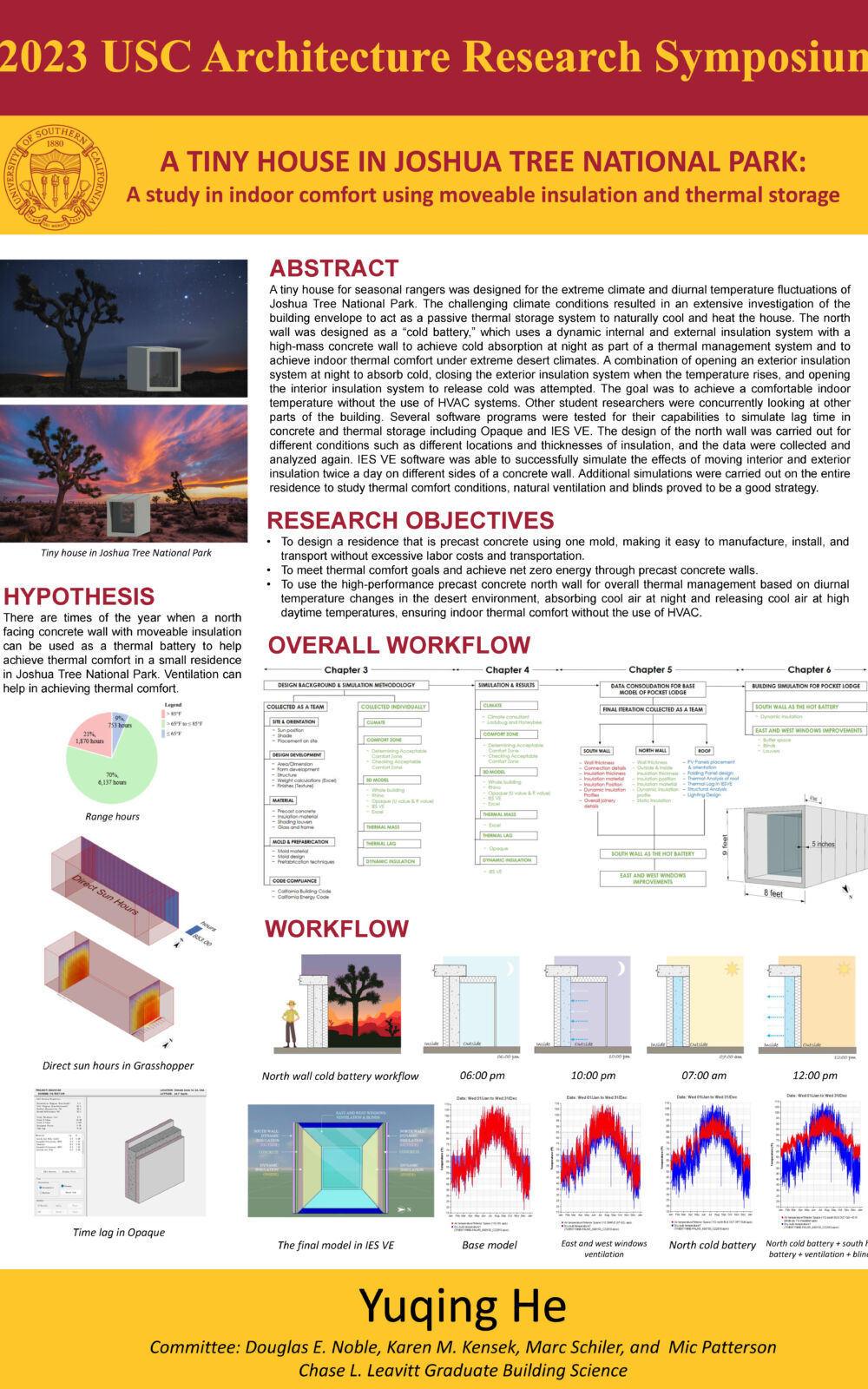A TINY HOUSE IN JOSHUA TREE NATIONAL PARK
By Yuging He
A tiny house for seasonal rangers was designed for the extreme climate and diurnal temperature fluctuations of Joshua Tree National Park. The challenging climate conditions resulted in an extensive investigation of the building envelope to act as a passive thermal storage system to naturally cool and heat the house. The north wall was designed as a “cold battery,” which uses a dynamic internal and external insulation system with a high-mass concrete wall to achieve cold absorption at night as part of a thermal management system and to achieve indoor thermal comfort under extreme desert climates. A combination of opening an exterior insulation system at night to absorb cold, closing the exterior insulation system when the temperature rises, and opening the interior insulation system to release cold was attempted. The goal was to achieve a comfortable indoor temperature without the use of HVAC systems. Other student researchers were concurrently looking at other parts of the building. Several software programs were tested for their capabilities to simulate lag time in concrete and thermal storage including Opaque and IS VE. The design of the north wall was carried out for different conditions such as different locations and thicknesses of insulation, and the data were collected and analyzed again. IES VE software was able to successfully simulate the effects of moving interior and exterior insulation twice a day on different sides of a concrete wall. Additional simulations were carried out on the entire residence to study thermal comfort conditions, natural ventilation and blinds proved to be a good strategy.
